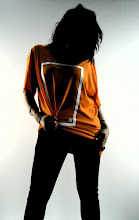A visit to the Otago Settlers Museum introduced me to the world of stereography as it existed long before the plastic viewmaster.
The Daguerreotype stereoportraits were often placed in special viewing kits, with lens that you could fold out and look through.

The most beautiful were the 'french tissue' ones, which were hand coloured and had little holes pierced into places on the subjects' clothes, so when held up to the light it appeared as though the image had jewel-like embellishments.
This is the viewer we used to look at various the images:
 photo by Max Oettli Stereoscopic viewer and stereo Cyanotype
photo by Max Oettli Stereoscopic viewer and stereo Cyanotype


![[working title] stillmoving](https://blogger.googleusercontent.com/img/b/R29vZ2xl/AVvXsEjRnU3UpO_-Hbt6Dq8w1-sBgP3zTr75vKYGpCQPOXwxIbJ2YazP03UPqstrsNdbNprsWWyEDi1-Th22Ft0HPDqv8cBfO1jXUMgnDJsVswbYJyI2DcZ3XV-UKO3WODdKufN7y5G8zWc61Cjc/s660/research2.jpg)










